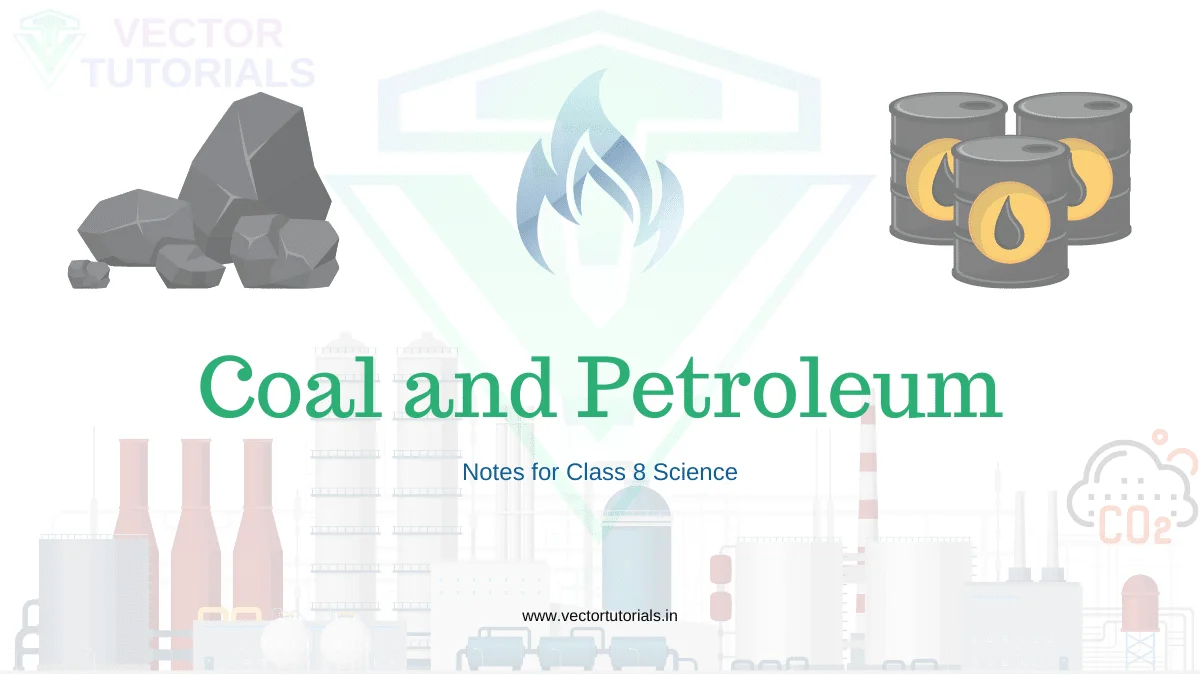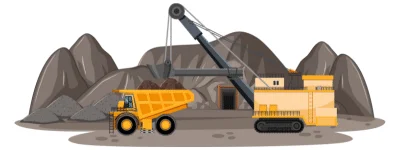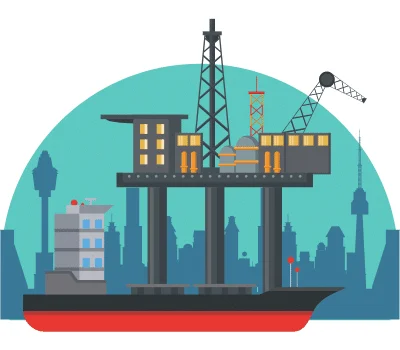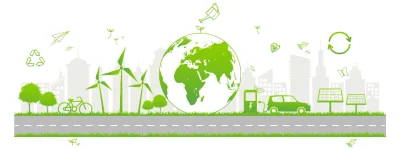Coal and petroleum have been essential for the development and growth of modern societies, providing energy for various sectors. However, their combustion and extraction have significant environmental impacts and contribute to climate change. In this section, you will get the Coal and Petroleum notes for class 8 Science.

As we move towards a more sustainable future, there is a growing emphasis on finding cleaner and renewable energy sources to reduce our dependence on these fossil fuels. This Coal and Petroleum chapter for class 8 science, helps students understand this concept and how such resources can be conserved for a sustainable usage.
You might want to see: NCERT Books for Class 8
Coal and Petroleum Notes – Class 8 Science English Medium
We have provide these Coal and Petroleum notes by covering all the important points and topics. Here, you will learn about Coal, Petroleum, Natural gas, their formation and also conservation tips for a longer run. The notes starts with the basics of resources.
Resources
Various materials which are used to fulfill or accomplish needs of a human. In other words, we can say that A ‘resource’ is anything in the environment that can be used. Resources can be broadly divided into following two categories. 1. Natural Resources and 2. Man-made Resources
Natural Resources
The resources that we receive from the nature are called natural resources.
Classification of Natural Resources: Natural resources can be classified into two types.
- Inexhaustible Natural Resources: The resources which are present in unlimited quantity in nature and are not likely to be exhausted by human activities are called inexhaustible natural resources. Examples: Water, sunlight, and air. These are also called renewable resources.
- Exhaustible Natural Resources: The resources which are present in a limited quantity in nature and can be exhausted by human activities are called exhaustible natural resources. Examples: Forests, wildlife, minerals, coal, petroleum, etc. These are also called non-renewable resources.
Man-Made Resources
These are the resources which are made by man. Some of its examples includes table, car, bus, plastic etc.
Fossil Fuels
Fossil fuels are non-renewable fuels produced from the remains of long-dead living organisms buried beneath the earth.
- Coal, petroleum, and natural gas are examples of fossil fuels.
- They were created by the decomposition of prehistoric plant and animal remains (fossils) which were buried under the earth a long time ago.
- These are exhaustible natural resources.
Coal
Coal is too hard as a stone, black in color and consists mainly of carbon. It is found in deep coal mines under the surface of the Earth. Coal is used as a fuel to cook the food. Earlier it was used in railway engines to produce steam to run the engine. Coal is also used as fuel in industries and in thermal power plants to produce electricity.

Formation of Coal
- Coal was formed by the decomposition of large land plants and trees buried under the Earth about 300 million years ago.
- About 300 million years ago, the Earth had dense forests in the low-lying wet areas. Due to natural calamities such as earthquakes, volcanoes and floods, these forests were buried under the surface of the Earth. As more soil got deposited on them, they were compressed.
- As a result, the temperature also rose as they sank deeper and deeper. Due to high pressure and temperature and the absence of air, the wood of the buried forest plants and trees slowly got converted into coal.
- The slow process by which the dead plants buried under the Earth are converted to coal is called carbonisation.
- Since coal was formed from the remains of the plants, it is also called a fossil fuel.
- Coal is extracted from coal mines and produce carbon dioxide gas (CO2) when heated and burnt in air.
Uses of Coal
- Coal can be used as a fuel in homes and industries.
- It is also used as a fuel in thermal power plants to generate electricity.
- Earlier, it was used in railway engines to produce steam to run the engine. Since coal is an exhaustible resource, the steam engines were replaced with other means.
Products of Coal
The coal obtained is processed in the industry to obtain useful products such as coke, coal tar, and coal gas.
1. Coke
- It is a tough, porous and black substance.
- It is an almost pure form of carbon.
- It is used in the manufacture of steel and in the extraction of metals.
2. Coal Tar
- It is a black liquid with an unpleasant smell.
- It is a mixture of approximately 200 substances.
- The products of coal are used to make synthetic fibres, drugs, plastics, synthetic dyes, perfumes, paints, varnishes, pesticides, photographic materials and roofing materials.
- Bitumen, a petroleum product, is used in place of coal tar for metaling roads.
3. Coal Gas
- Coal gas is obtained during the processing of coal to get coke.
- It is used as a fuel in many industries situated near coal processing plants.
Petroleum
Petroleum is a liquid form of fuel. It is also known as crude oil and is found trapped between layers of impervious rocks under the ground. It is a dark-coloured viscous liquid, and like all other oils, it is lighter than water. It is a mixture of different hydrocarbons. Petroleum is refined into various fuels such as Petrol, Diesel, etc.
- Petroleum was formed from the organism living in the sea. The dead bodies of these settled at the bottom of the sea and got covered with salt and clay.
- After millions of years, high temperature, high pressure, and absence of air converted those dead bodies of organisms into petroleum and natural gas.
- Layer containing petroleum and natural gas remains above water because oil and gas are lighter and do not mix with water.
- First oil well was drilled in Pennsylvania (USA), in 1859. 8 years later, (in 1867) oil was found in Assam (India).
- Oil is found in Assam, Gujrat, Mumbai High, and in river basins of Godavari and Krishna.
- Petroleum is also known as the black-gold, because the crude oil extracted from land is black in color and it has a very high value.

Refining of Petroleum:
Petroleum is a dark oil and mixture of various constituents (i.e., petroleum gas, diesel, paraffin wax etc.). Process of separating different constituents of petroleum is called refining. Refining is done in petroleum refinery.
- Substances obtained from petroleum and natural gas are called Petrochemicals.
- Petrochemicals are used in manufacturing of detergents, fiber (polyester, nylon, acrylic etc.), polythene and other plastics.
- Hydrogen gas (obtained from natural gas) is used in fertilizers (urea).
- The constituents obtained from petroleum and natural gas are used in several works such as fuel, lubrication, surfacing etc.
Constituents of Petroleum and their Uses
| Constituents of Petroleum | Uses |
|---|---|
| LPG (Liquified Petroleum Gas) | As a fuel of home and industry. |
| Petrol | Motor fuel, aviation fuel, dry cleaning agent |
| Diesel | Heavy motor vehicles fuel, electric generators |
| Kerosene | Fuel for lamps, stoves, and jet aircrafts |
| Lubricating Oil | Lubrication |
| Paraffin Wax | Vaseline, candles, ointments, etc. |
| Bitumen | Road surfacing, paints, etc. |
Helpful for Class 8 Students: Maths Formulas for Class 8 Free Download
Natural Gas
Important fossil fuel and easier to transport. Natural gas is stored under high pressure as CNG (Compressed Natural Gas).
- CNG is used for power generation and used as fuel in transport vehicle as it is less polluting than petrol and diesel. Hence, it is considered to be a clean fuel.
- CNG can also directly be used for burning in home and industries by supplying through pipes.
- Natural gas is also used as a starter to produce several chemicals and fertilisers.
- In India, natural gas is found in Rajasthan, Tripura, Maharashtra and in Krishna Godavari delta.
Delta: Delta is a landform created by deposition of sediments carried by a river as the flow leaves its mouth and enters slower-moving or stagnant water.
Conservation of Natural Resources
The amount of coal, petroleum and natural gas present in the Earth is limited. The burning of fossil fuels is a major source of air pollution and is also linked to global warming. So, we should use fossil fuels only when necessary. This will result in a better environment, lesser risk of global warming and fossil fuel availability for a longer period of time.

Conservation is the sustainable use and protection of natural resources. The main aim of conservation is to maintain an adequate supply of these resources so that they are available in the future also.
Tips from the Petroleum Conservation Research Association (PCRA) to save petrol/diesel:
- Drive at constant speed and moderate speed (40-60 kph) as much as possible and avoid excessive braking.
- Switch off the engine at traffic lights or at a place where you have to wait.
- Ensure correct tyre pressure and ensure regular maintenance of the vehicle.
- Switch off the stove or gas instantly after cooking.
- Close the lid of utensils while cooking for faster and economical cooking.
Frequently Asked Questions on Coal and Petroleum Notes
That was all about the Coal and Petroleum notes of class 8 science. Coal and petroleum are two important sources of energy that play a significant role in our daily lives. They are non-renewable resources of energy in our life and the judicial use of such resources is necessary. After going through above Coal and Petroleum notes, students get to know about the basics of Coal and Petroleum and how they can help in conserving these natural resources.
We recommend practice this chapter a few times to clear the doubts and you can also join Vector Tutorials’s app to attempt tests for Coal and Petroleum chapter.
More Science notes for Class 8 Science: